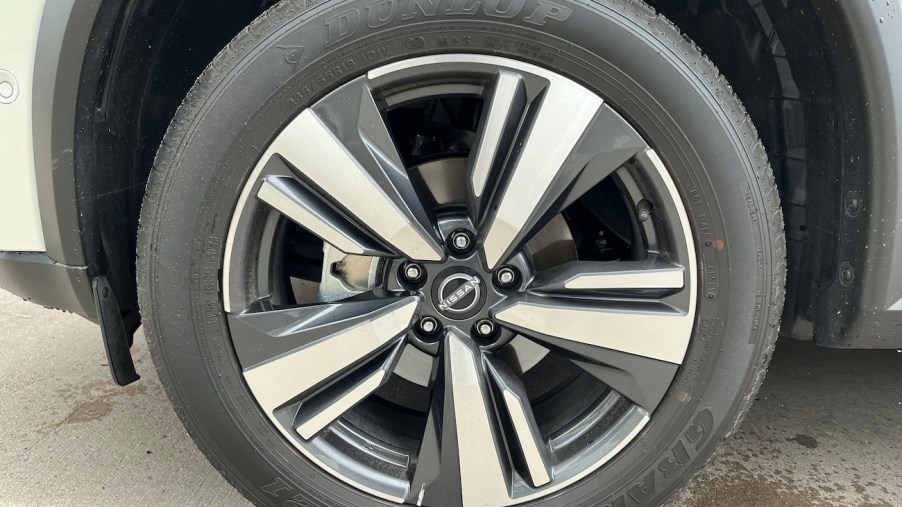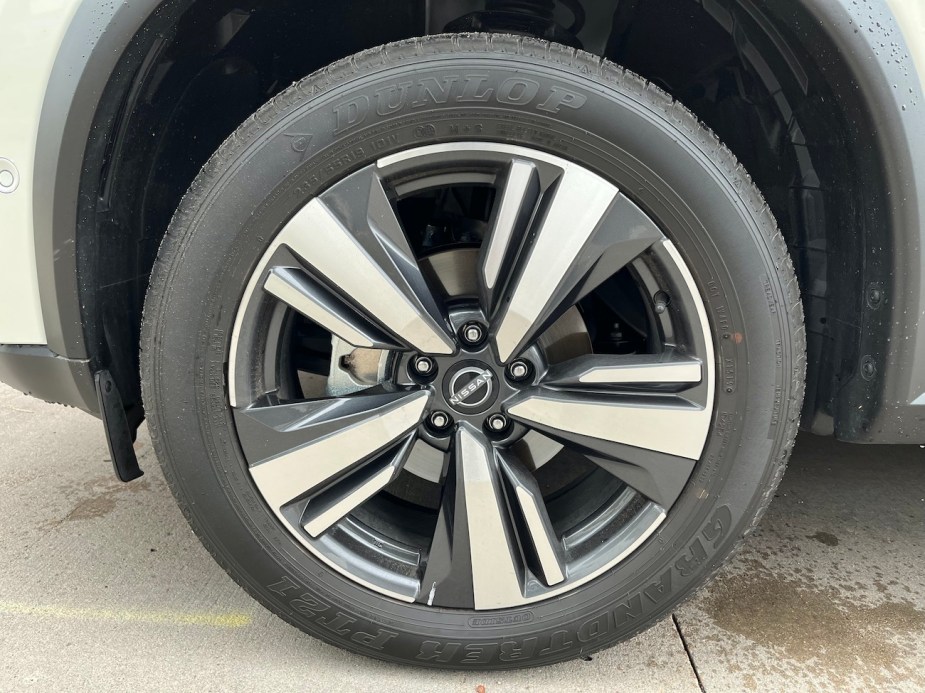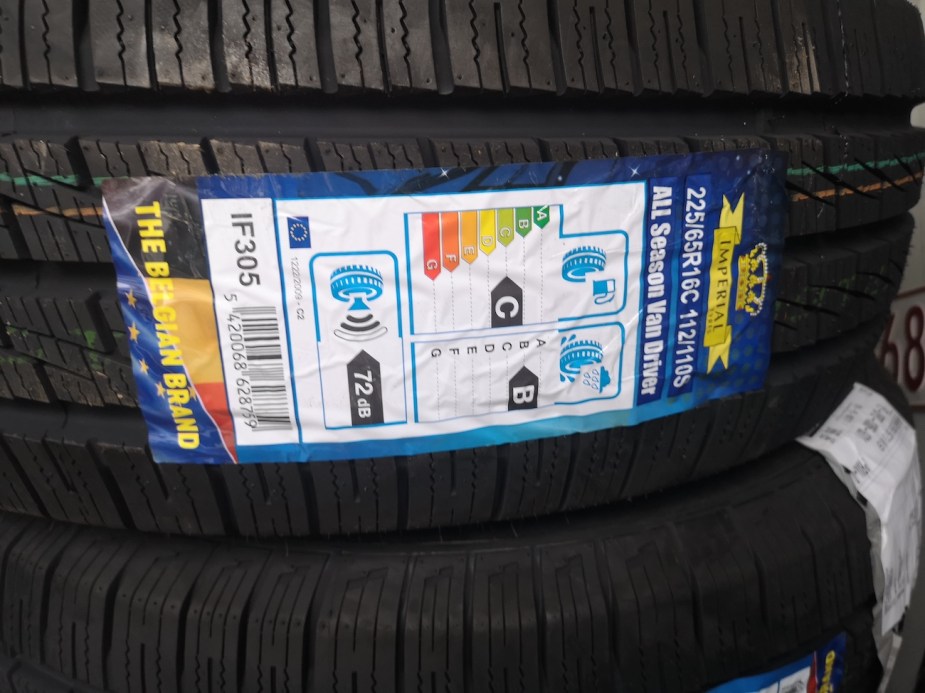
What Do Red Dots On Your Tires Mean?
Have you ever noticed red or yellow dots on your car’s tires? Sometimes, it rubs off quickly or gets washed away. If you’re not someone who cleans their car very often, red or yellow dots might remain on your tires for a while. They’re completely normal to see and aren’t a bad sign by any means. Usually, new tire replacements will have markings like these on them. What do red dots on your tires mean?
Why are there red dots on my tires?

According to Family Handyman, red or yellow dots on tires indicate irregularities noted by tire manufacturers. It’s nearly impossible to create a perfectly balanced, perfectly round tire, so dots of paint help to mark where the tire might be a little off. Furthermore, service technicians who install tires use them to install and balance them correctly. Because they know about the irregularities marked by the manufacturer, they’re able to balance them perfectly with your vehicle.
Moreover, it’s vital for tire installation to make sure they’re balanced perfectly. Not only do balanced tires make the vehicle ride more smoothly, but they’re also crucial for the safety of those inside the vehicle. Without red dots on the tires, it would be difficult for mechanics to determine where the tire has irregularities, whether in its shape or otherwise, to optimize the vehicle’s balance.
Red and yellow dots and where to find them

If you’ve never noticed dots on your tires, it might be because you’ve had mostly new vehicles without tire replacements. You might see red or yellow dots if you drive a car long enough to need new tires or buy a used vehicle. They’re usually located in various positions, depending on what they’re indicating.
FH says the yellow dots identify where a tire weighs the least. This means the lightest point of a tire should have a yellow dot, which is usually lined up with the valve stem because it’s the tire’s heaviest part.
Next, red dots tell technicians where the tire is flattest. The tire’s lowest point is usually directly across from the highest point of the wheel. The highest point is usually marked by a colored dot or even a notch on the wheel itself. If both dots are present on a single tire, the technician will use the red dot to balance it. This is because it’s more important to take the flattest spot into account than the weight.
Why do the tires have to be balanced?
With dots and markings everywhere, it seems manufacturers and technicians go through a lot of trouble to balance tires. Why is this so important? According to Family Handyman, “Wheel balancing spins a tire/wheel assembly to identify the location(s) where weights need to be placed to eliminate vibrations and help tires roll smoothly. Out-of-balance tires may develop dangerous bald spots, which negatively affect tread wear, and shorten tire life. Out-of-balance tires can also cause premature suspension component failures.”
During driving, there are a few ways tires can be taken out of balance. For example, tires wear out, over or under-inflation, improper alignment, an improper repair, or the car sat in one place for too long. Furthermore, if any of these things occur, it’s essential to get your tires rebalanced. If something feels off, it could cause one or more tires to wear out unevenly and faster than the rest.
Red dots on your tires
In conclusion, red dots or yellow dots on your tires mean there are irregularities with the rubber. Manufacturers use paint dots to notify mechanics, whether it is a lighter spot in the tire, a flat spot, or something else. This way, when mechanics install the tires on your car, they know how to balance them. Moreover, balancing is important to extend tire life and offer a smooth ride for your vehicle.



